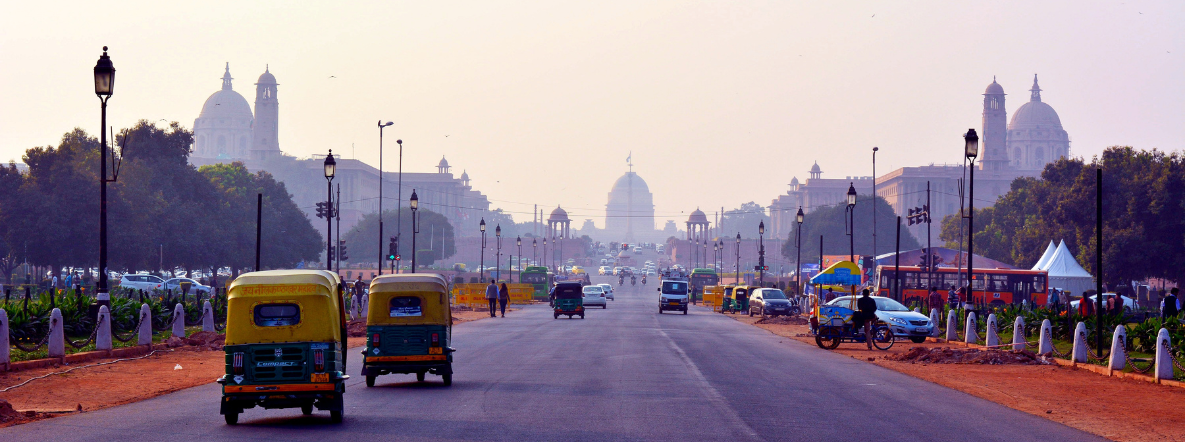Ensuring a green and lean public transport system for Delhi
05 Jun 2023
Opinion: Anupma Mehta and Sanjib Pohit.
In the interplay between emission management and monetary returns, cost-effectiveness is a critical issue in the metric of a transport system.
On this World Environment Day, we revisit the imperative to balance the rising transportation needs of a growing population in the capital city of Delhi with the mandate to reduce greenhouse gas (GHG) vehicular emissions to contain the skyrocketing pollution levels in the city. The instrumental role played by an efficient transport system in the growth of a city is indisputable, as it is one of the key defining features of an agglomeration economy. If the city is taken as a metaphor for life, its transport network is the blood that keeps this life running. In this context, the public transport system in Delhi has frequently come under the scanner. The fact that its residents spend a large part of their daily lives on its congested and polluted roads while commuting between their homes and workplaces does little to assuage this concern. The public transport in the metropolis includes the Delhi Metro, buses, three-wheelers, cycle-rickshaws, e-rickshaws, and taxis. Among these, the Delhi Metro, since its inception over 25 years ago, has proved to be one of the most popular and viable means of transport in the city. While easing travel and reducing traffic on the roads, it has also significantly helped curb pollution in the capital. It is estimated that every commuter who chooses the Delhi Metro over an on-road vehicle contributes to an emission reduction of about 100 mg of carbon dioxide for an average trip of 10Km.
However, in the complex interplay between emission management and actual monetary returns, cost-effectiveness is a critical issue in the overall efficiency metric of a transport system. And the Delhi Metro has some ground to cover on this metric. Comparisons with other cities show that, for its size, the Delhi Metro carries far fewer riders than almost any other city’s system. According to data collated just before the pandemic, it had a daily rider average of 2.8 million travelling on a 314-km track. Compare this with corresponding figures for other cities—the smaller metro system of 286 km in China’s Shenzhen city was carrying 60 per cent more riders, at 4.5 million. The even smaller metro system of Mexico City, with a track of 226 km, too carried more than 4 million riders daily. And Singapore, with less than two-thirds of Delhi’s track length at that time, at 199 km, accounted for a ridership of 3.1 million, 10 per cent higher than that of Delhi. Despite its efficiency in terms of man and time management, the low passenger track ratio of the Delhi Metro is, therefore, a puzzle that needs to be solved. One reason could be its relatively high fares, which may be beyond the means of a low-income commuter. A recent Centre for Science and Environment study revealed that among leading Metros across the world, the Delhi Metro remains the second-most unaffordable system in terms of the percentage of income spent for using it. Thus, an unskilled daily-wage labourer in Delhi spends an average of 8 per cent of his income by travelling on a non-AC bus, 14 per cent on an AC bus, and 22 per cent on the Delhi Metro. Such a situation underscores the need for developing other modes of green public travel in the city, and electric vehicles (EVs) are ostensibly stepping in to bridge this gap. With their promise of zero emissions, cleaner production techniques, and use of eco-friendly materials, EVs offer hope of controlling both air and noise pollution. According to the Indian Network on Climate Change Assessment (INCCA), India is the third largest emitter of CO2 in the world.
Official data on automobile sales shows that they accounted for 55 per cent of all such vehicles registered in Delhi since January 2023. The bulk of these EVs are two-wheelers, with as many as 1,745 electric two-wheelers having been registered, as of 14 March 2023. And therein lies another puzzle. One of the biggest challenges in the use of e-scooters pertains to their transportation and recharging system. The dockless e-scooters have to be dispatched to and collected from the charging spots using trucks, which will continue to emit CO2. How can we then strike a balance between meeting the increased transportation needs of Delhi while curtailing environmental pollution? The answer may perhaps lie in traversing the middle path, such as the adoption of principles of the Mission Lifestyle for Environment (LiFE), announced by Prime Minister Modi at the 2021 Glasgow UN Climate Change Conference. Mission LiFE is based on the concept of ushering in behavioural change, supported by policy measures and infrastructural development. The Government would also do well to prevent cluttering Delhi’s roads with EVs before putting in place a fully functional infrastructure for shifting from fossil to renewable energy sources. Only such a cohesive balance between the use of multiple modes of transport can usher in a green and lean transit system in the national capital.
(Anupma Mehta is Editor and Sanjib Pohit is Professor at NCAER. Views are personal.)
Published in: The Pioneer, 05 Jun 2023






